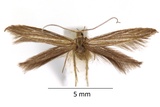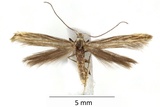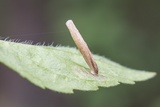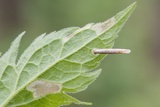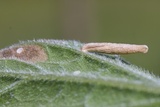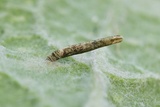Coleophora follicularis (Vallot, 1802) Species
Last modified: Nov. 28, 2025, 11:37 a.m.
A rare species throughout Belgium.
Details
- Classification
- Family: Coleophoridae > Genus: Coleophora > Species: Coleophora follicularis
- Vernacular names
- Koninginnenkruidkokermot (NL), Agrimony case-bearer (EN), Wasserdost-Sackmotte (DE)
- Synonyms
- Coleophora otidipennella sensu auct., nec (Hübner, 1817) , Coleophora troglodytella (Duponchel, 1843) , Coleophora lineariella sensu Bruand, 1855 , Coleophora ramosella sensu De Fré, 1860, nec Zeller, 1849 and Coleophora inulifolia Benander, 1939
- First mention in Belgium
- De Sélys-Longchamps E. 1844. Énumération des insectes Lépidoptères de la Belgique. — Mémoires de la Société royale des Sciences de Liége 2: 1–35. On page 25 (as Ornix otidipennella H.). view page
- Status
-
Native
Distribution
Case
The caterpillar makes a straw coloured tubular case of about 10 mm long.
The mouth angle is approximately 30°.
See also bladmineerders.be.
Bionomics
The caterpillars make plenty of little mines.
They overwinter in their cases and resume feeding in springtime until they are fully grown in April–May.
The adults come to light.
No pictures yet!
Flight periods
The adults fly in one generation a year from mid-June till the beginning of August.
Observed on
- Host plant (species):
- Eupatorium cannabinum and Pulicaria dysenterica
- Host plant (genera):
- Pulicaria, Carduus, Achillea, Anthemis, Leucanthemum, Pulicaria and Tanacetum
C. follicularis accepts a whole range of food plants but the larvae are mostly found on Eupatorium cannabinum and Pulicaria dysenterica.
No pictures yet!
Habitat
This species is mostly found in open areas and edges of forests and roads.
No pictures yet!
